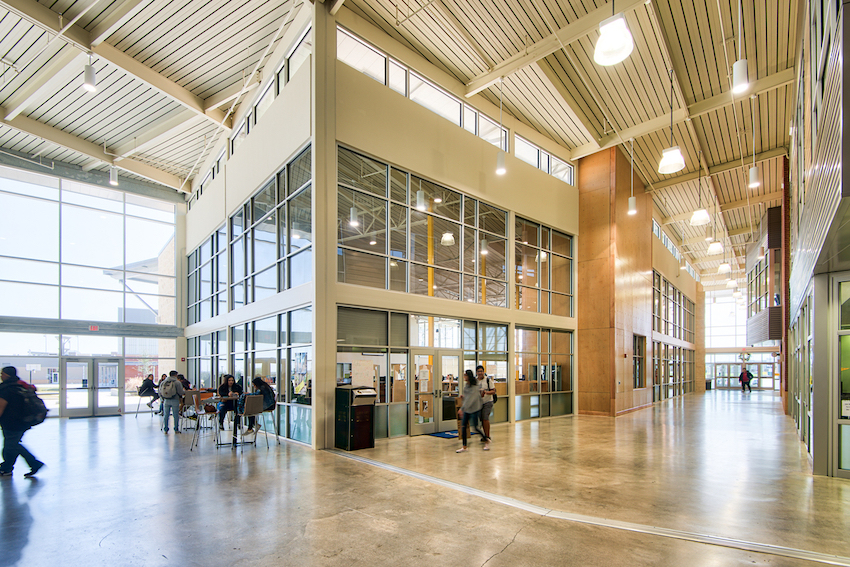Public Health and Sustainability Concerns in Schools
Controlled Isolation
A second realization regarding schools and health is the need, in some cases, to make spaces smaller to isolate students, teachers, or visitors. Some of this is driven by the general health guidelines to avoid large group gatherings. Hence, larger communal spaces in schools are either being underutilized or avoided, or they can be broken temporarily into smaller spaces. This view is being reinforced by administrators and teachers who are indicating that they are trying to change large rooms into smaller classrooms but would like the flexibility to open the spaces back to their original size in the future. In these cases, operable glass walls can provide a solution as well. They can be installed to break up large areas when needed and then fold or slide back out of the way when not required. Designing this flexibility into new school buildings allows for optimizing the ways that this is done. Nonetheless, it is possible to retrofit school buildings very successfully with operable glass walls for this purpose as well.
In other cases, there may be a need to directly isolate or quarantine students at risk or to separate any visitors to the school from students and staff. The AIA report addresses nurses’ offices or clinic areas directly in this regard. It suggests that not only should social distancing be practiced, but temporary spaces may also need to be created. Specifically, the recommendations include: “1) Identifying a space to temporarily and comfortably isolate a symptomatic student or staff member that is separated from non-symptomatic occupants, including students who need to obtain other medical care; 2) Creating a self-contained medical room just outside the main school facility; and 3) Establishing a “nurse’s zone” treatment area and integrating minimum social distancing between resting cots and using privacy curtains between beds.”
In these situations, operable glass walls can be used to address all of these needs. They can be installed in an existing space to separate and isolate people when needed and then opened back up when a larger space is more appropriate. This approach is clearly useful all of the time, regardless of the disease or condition that is being protected against. Therefore, retrofitting or including such a flexible nurse/clinic area into a school will provide a well-designed solution for limiting the spread of disease for the full life of the school building. This approach can also be less costly than constructing permanent partitions with doors, etc., so it is worthy of consideration on several fronts.
Notice

www.inpro.com

www.mitsubishipro.com

www.nanawall.com

www.newmill.com/gallery










